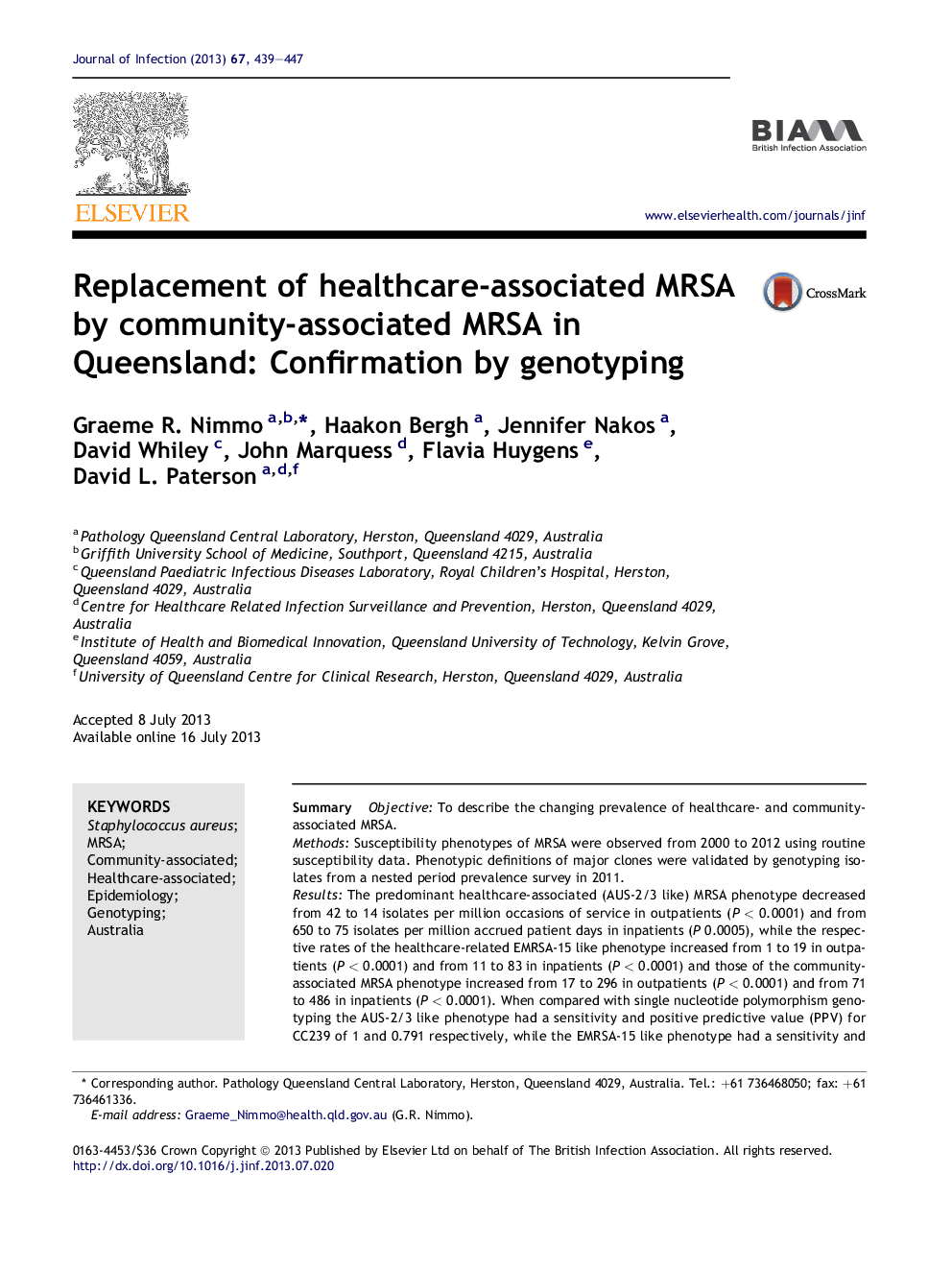| Article ID | Journal | Published Year | Pages | File Type |
|---|---|---|---|---|
| 3374650 | Journal of Infection | 2013 | 9 Pages |
SummaryObjectiveTo describe the changing prevalence of healthcare- and community-associated MRSA.MethodsSusceptibility phenotypes of MRSA were observed from 2000 to 2012 using routine susceptibility data. Phenotypic definitions of major clones were validated by genotyping isolates from a nested period prevalence survey in 2011.ResultsThe predominant healthcare-associated (AUS-2/3 like) MRSA phenotype decreased from 42 to 14 isolates per million occasions of service in outpatients (P < 0.0001) and from 650 to 75 isolates per million accrued patient days in inpatients (P 0.0005), while the respective rates of the healthcare-related EMRSA-15 like phenotype increased from 1 to 19 in outpatients (P < 0.0001) and from 11 to 83 in inpatients (P < 0.0001) and those of the community-associated MRSA phenotype increased from 17 to 296 in outpatients (P < 0.0001) and from 71 to 486 in inpatients (P < 0.0001). When compared with single nucleotide polymorphism genotyping the AUS-2/3 like phenotype had a sensitivity and positive predictive value (PPV) for CC239 of 1 and 0.791 respectively, while the EMRSA-15 like phenotype had a sensitivity and PPV for CC22 of 0.903 and 0.774. PVL-positive CA-MRSA, predominantly ST93 and CC30, accounted for 60.8% of MRSA, while PVL-negative CA-MRSA, mainly CC5 and CC1, accounted for 21.4%.ConclusionsThe initially dominant healthcare-associated MRSA clone has been progressively replaced, mainly by four community-associated lineages.
